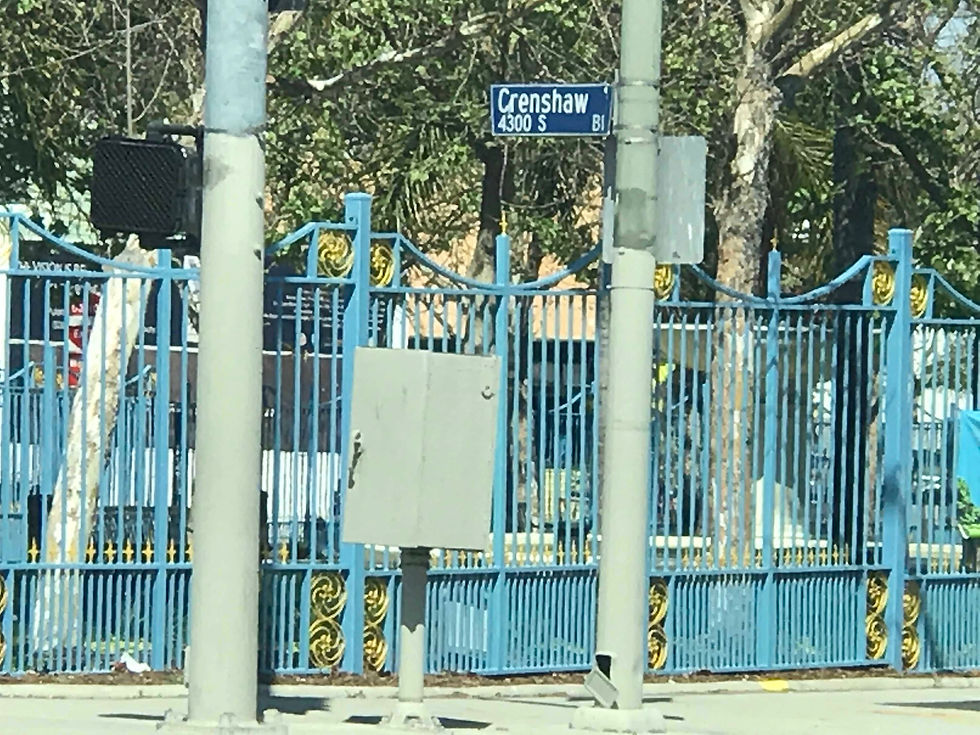Gentrification on the Palm Trees
- Vernon C. Lindsay, PhD

- May 17, 2019
- 3 min read

The weather is warm all year long. Palm trees line many of the streets. The traffic is notorious, but people flock to the city every day. This is Los Angeles.
Two bedroom houses for sale at 1 million USD, home school mom meetups at local playgrounds, and of course Starbucks’ coffee shops are among the signs of gentrification. While visiting my parents in Los Angeles, I saw these symbols of gentrification and wrote this piece.
There is an economic agenda gaining momentum to reshape the Crenshaw community in LA.
The Crenshaw/LAX train line under construction is one of the many indicators that change is imminent. New college preparatory schools are being built. Open air museum blueprints are advertised in local newspapers. My parents live right in the mix of the South LA evolution.
One day, I went to the park with my children and overheard a conversation among three moms. As their children played on the swings and in the sandbox, these women talked about the benefits of homeschooling and their plans for the day. While watching my three children play with theirs, I said to myself, “LA will be a completely different city in 3-5 years.”
The late hip-hop artist and community activist Nipsey Hussle engaged in meaningful work to disrupt gentrification in South LA. He participated in school reform. Through his businesses, he provided jobs and other resources for people in need.
One of the spots near my parents’ house that I make a priority to visit during my trips is Leimert Park. It is one of the few locations in the city where you can find multiple Black-owned businesses within a four block radius. In this quaint shopping and cultural corridor, there is a small park with a fountain surrounded by a walking track.
The city has erected a blue and gold iron cast fence around the park grounds. Some of the stores remain open, but the park within the Leimert business district stays closed. I asked my father about the fence, and he said the city installed it a few months ago to prevent people who are homeless from setting up camps.
On Sundays, the Leimert stores open their doors, and people from different parts of the city come to sell art, food, and other cultural artifacts from the African diaspora. Before the fence, this weekly mini-festival took place on the track surrounding the park. Because the fence is locked, vendors are now forced to set up in the street on Sundays.
While investors win profits from gentrification processes, local families and traditions rooted in the community lose the spaces they call home. Schools improve to encourage new families of higher income brackets to enroll. New businesses are opening to serve the demographic that is moving into the Crenshaw district.
After asking myself how leaders and others can respond to gentrification, I came up with a couple of musts.
We must support businesses owned by local residents, so that they can afford rent hikes. We must discover ways to empower young people in schools. We must reconnect with the greatness inside ourselves and create companies that provide services and products for consumers who live in the community. If we fail to do any of these musts, the gentrification that is taking over many cities, including LA, will prevail.
This moment in history is the time to dig deep into our creativity and discover methods aligned with holding on to our communities. Today, I want you to find a business owned by a local family and spend your dollars or other currency with them.









Comments